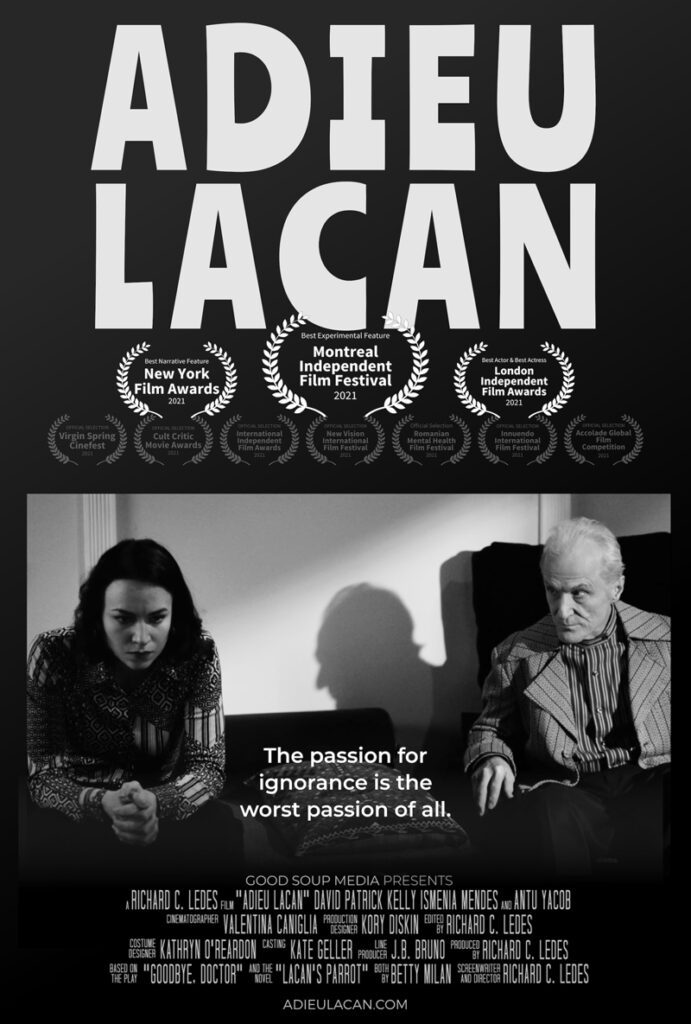
One of the tricks of adapting a stage play to film is making sure that the film is able to translate the original source material effectively and capture the same feel. In some cases, plays can be limited and solely focus on not even a handful of characters. Film has the opportunity to capture that feel or, if the director ever so chooses, go for an alternative approach. In the case of Richard Ledes’ Adieu Lacan, which was primarily based on the play Goodbye, Doctor, the original source material only has two central characters and one other character throughout its entire story.
While I’m not too familiar with the play on which Adieu Lacan is based, Ledes’ approach comes off as the perfect way to work with something that is minuscule and mostly dialogue-driven. It’s a brilliant and often funny insight into how psychoanalysis sessions play out.
Ismenia Mendes plays Seriema, a woman who is at a complete loss. She’s suffered several miscarriages and her marriage seems to be coming to an end. The main struggle she faces is doubting her chance of becoming a mother and a good wife. She meets with the psychoanalyst Jacques Lacan (David Patrick Kelly), who tries an alternative approach by breaking down and questioning Seriema on what supposedly has led to her current position in life. Rather than a straight-up diagnosis, Lacan challenges her to go deeper into her issues.
Adieu Lacan mostly keeps itself in the doctor’s office, which is filmed entirely in black and white. Ledes’ approach to stripping the film of any color during the numerous sessions Seriema has gives the viewer that sense of gloom and dread that she feels as she talks to Lacan. Ledes also films it in a 4:3 aspect ratio, adding a closed-off and inescapable feeling.
There are moments where Ledes breaks away from the office and films an exterior scene in color. It’s a perfect contrast to how the viewer is supposed to feel inside the office. The aspect ratio remains the same, but the colors during the exterior shots are well-captured and give the viewer that feeling of freedom before another session.
For his part, Kelly – who has always been an extremely underrated actor – really commands the screen as Lacan. He’s willing to listen and hear every word that Seriema has to say, but he also doesn’t give his patient an easy answer.
It’s fun to see Kelly and Mendes go back and forth with each other. This is a perfect example of two terrific actors playing their parts so well and never outdoing each other. Certain scenes showcase each one having their own inner monologue. He questions how she’s able to come out of this, and she questions his tactics. It’s brilliant stuff.
Adieu Lacan does wander into some oddball, almost David Lynch-like territory with Lacan and an exercise method he does in one scene, as Ledes multiplies, mirrors, and has the duplicate images displayed in a circular motion. It’s an interesting technique, which probably wasn’t intended to give Lynch vibes. But in the way it was shot and with Kelly in the scene, that’s how I perceived it.
At times, Adieu Lacan is quirky, and it may be a little bit of a slow burn for some. But it results in something that is unique and worth seeking out. It’s an expertly shot film with two terrific leads and offers an intriguing introspection for both the psychoanalyst and the patient.